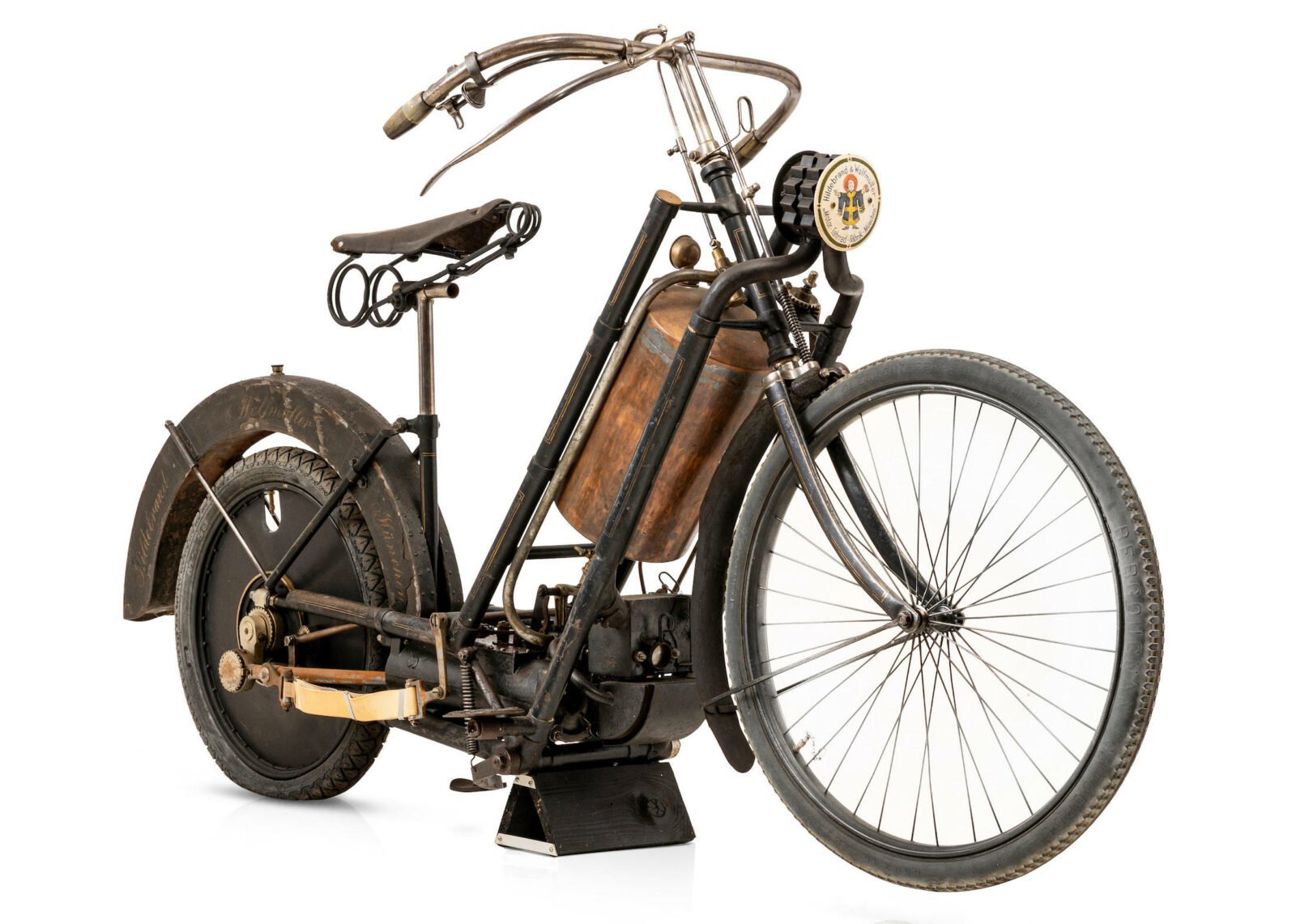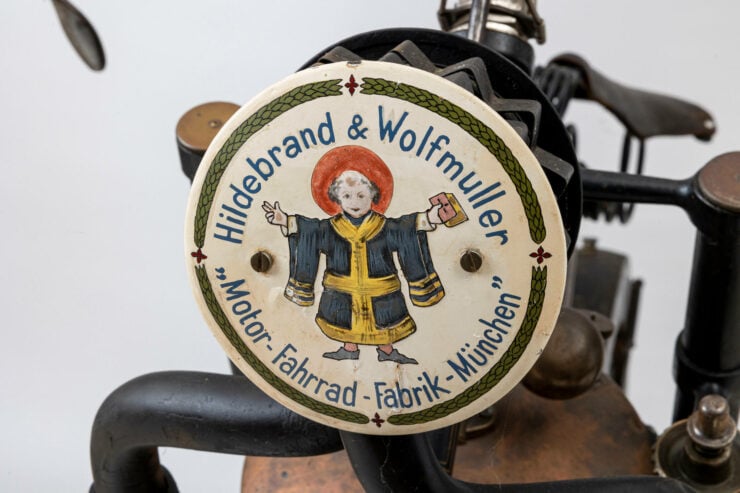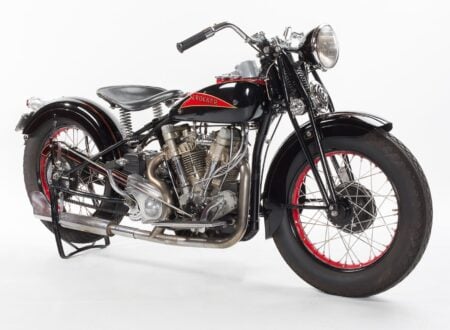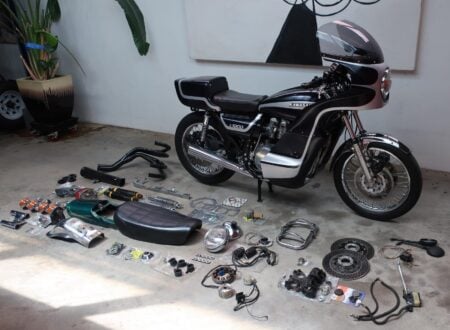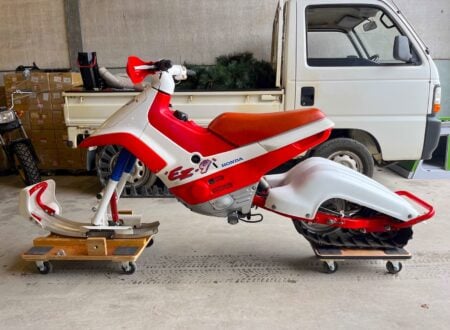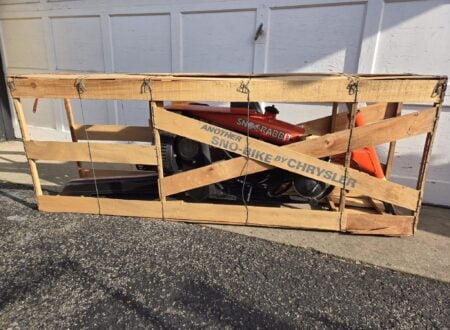This is a Hildebrand & Wolfmüller Motorcycle from 1894, a bike that carries the distinction of being the first production motorcycle in history. It was powered by a 1.5 liter parallel twin producing just 2.5 horsepower, and it could reach speeds of up to 28 mph.
Just a few examples of the Hildebrand & Wolfmüller Motorcycle remain today, mostly in private collections or museums like The Science Museum in London, The Henry Ford Museum in Detroit, The Deutsches Zweirad-Museum in Germany, and the Barber Museum in Alabama.
Fast Facts – The Hildebrand & Wolfmüller Motorcycle
- The Hildebrand & Wolfmüller Motorcycle was the first series production motorcycle ever made, it’s believed that approximately 2,000 were produced in total. This was the vehicle for which the name “motorcycle” was first coined.
- The Hildebrand & Wolfmüller company had earlier made steam engines, and they incorporated a number of steam technologies into their motorcycle – the connecting rods drove the rear wheel directly and the wheel itself acted as the flywheel.
- Though the company attracted a lot of attention and sold a considerable number of motorcycles, which were very expensive, a series of issues with the engineering came to light and the world’s first motorcycle was ultimately deemed a failure.
- The Hildebrand & Wolfmüller Motorcycle you see here is believed to be the earliest numbered example still in existence, quite possibly making it the oldest production motorcycle on earth – and it’s currently for sale with a price guide starting at $119,500 USD.
The World’s First Production Motorcycle
The first motorcycle ever put into series production was the Hildebrand & Wolfmüller Motorrad starting in 1894. This was the vehicle for which the word “motorcycle” was first used (“motorrad” in German) and it pioneered a few unique technologies like oil-in -rame, a rear fender that doubled as the water rank, a tubular steel frame, and a fuel tank fitted between the top frame tubes.
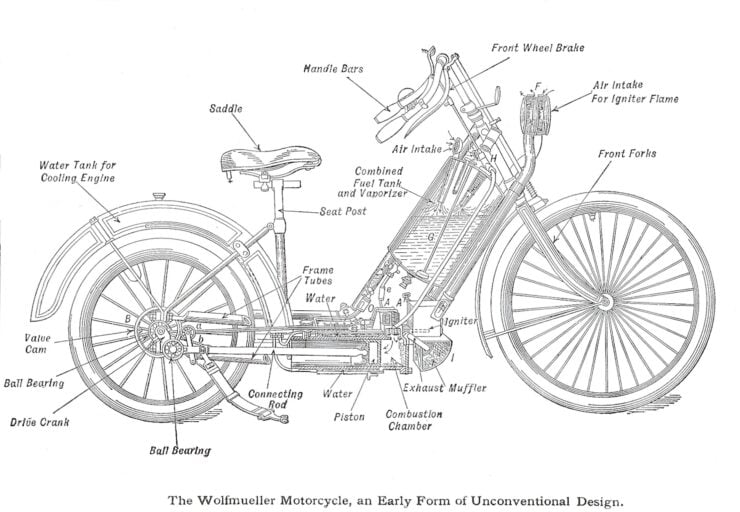

Brothers Heinrich and Wilhelm Hildebrand were steam-engine engineers before they teamed up with Alois Wolfmüller for their new motorcycle creation, and a few steam engine concepts would make it into the final motorcycle design.
Working together at their workshop in Munich the men developed a liquid-cooled parallel twin, four-stroke gasoline engine with a displacement of 1.5 liters or 1,489cc. It had a bore x stroke of 90 mm × 117 mm and it could produce 2.5 bhp at 240 rpm, good for a top speed of approximately 45 km/h (28 mph).
How The Hildebrand & Wolfmüller Motorcycle Worked
This engine was installed low in the frame and parallel with the ground, this helped lower the center of gravity but it also meant that the connecting rods from each cylinder could directly power the rear wheel – one on each side. The rear wheel itself and the forward momentum of the motorcycle provided the flywheel function.
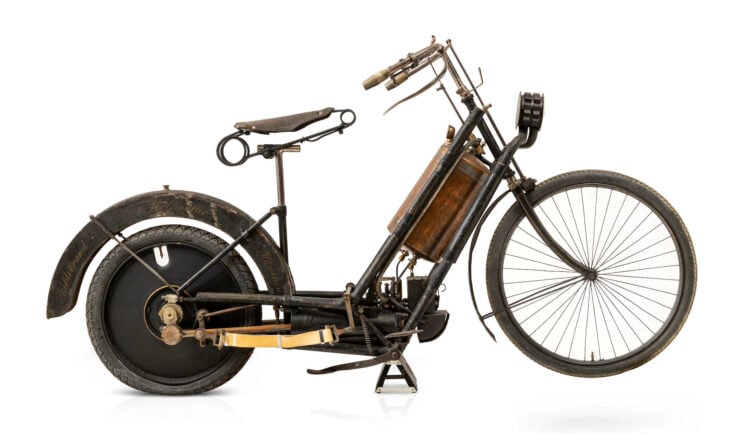

Fuel was stored in a tank between the upper tubes of the frame, and the water for engine cooling was cleverly stored in the rear fender. The frame itself is tubular steel, probably sourced from the Hildebrand’s bicycle manufacturing division.
A single sprung saddle was fitted atop an adjustable seat stem, and the handlebars are raked back for comfort – a style that was standard on the bicycles of the say.
The unusual gasoline engine was fed by a surface carburettor through the atmospheric inlet valves and into the cylinders where it was ignited by platinum hot tube. After ignition the piston was forced down the cylinder, and it’s connecting rod would drive the rear wheel directly much like a steam train.
The piston and connecting rod were then forced back up the cylinder by adjustable rubber bands fitted to each side of the bike parallel to the engine. To start the bike the rider had to push it along until the engine fired then jump into the saddle for a ride.
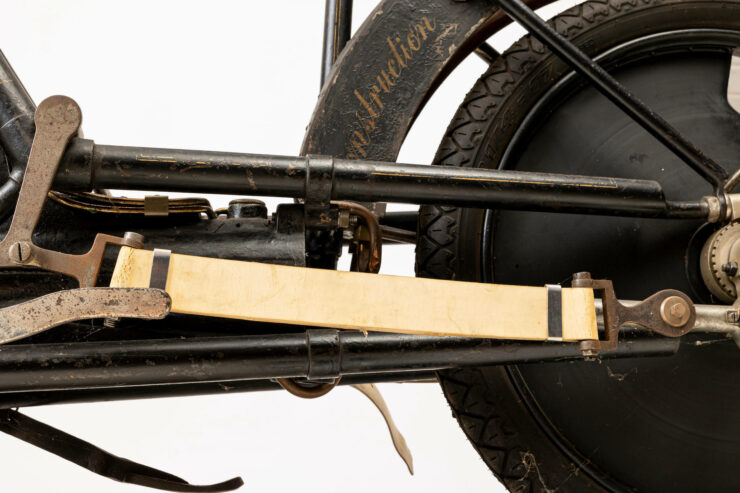

The Hildebrand & Wolfmüller Motorcycle was produced both in Germany and under license in France by Duncan, Superbie et Cie. The design showed early promise by taking 2nd and 3rd place in a combined car/motorcycle race in Italy from Turin to Asti and back, Wolfmüller himself was piloting the bike that came second.
Later races would show up shortcomings in the design, and understandable scenario given how new the concept of the motorcycle was, not to mention the automobile. The French concern lost a court case filed by an angry owner and by 1897 both companies had collapsed.
The few surviving examples are now highly prized and they now typically either reside in the collections of the well-heeled or in major museums.
The 1894 Hildebrand & Wolfmüller Motorcycle Shown Here
The Hildebrand & Wolfmüller Motorcycle you see here is believed to be the oldest surviving production motorcycle in the world. It was made early in the series production run in 1894.
Its early history is largely lost, it was bought by prominent Spanish collector Carlos Garriga in January 1990 and today it remains in remarkably original and untouched condition.
If you’d like to read more about it or register to bid you can visit the listing here on Bonhams. It’s due to roll across the auction block with them on the 1st of February in Paris with a price guide of €110,000 – €170,000 or approximately $119,500 – $184,500 USD.
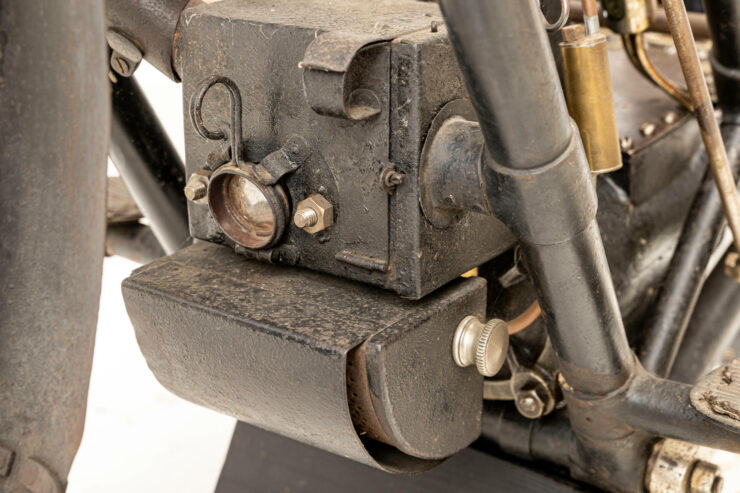
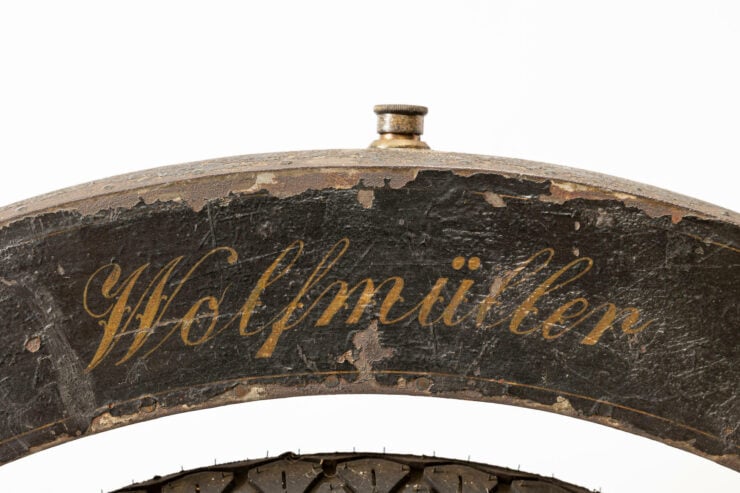
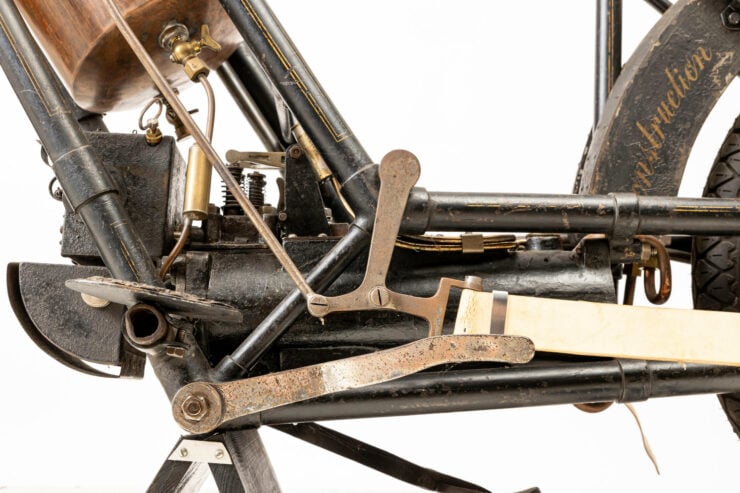
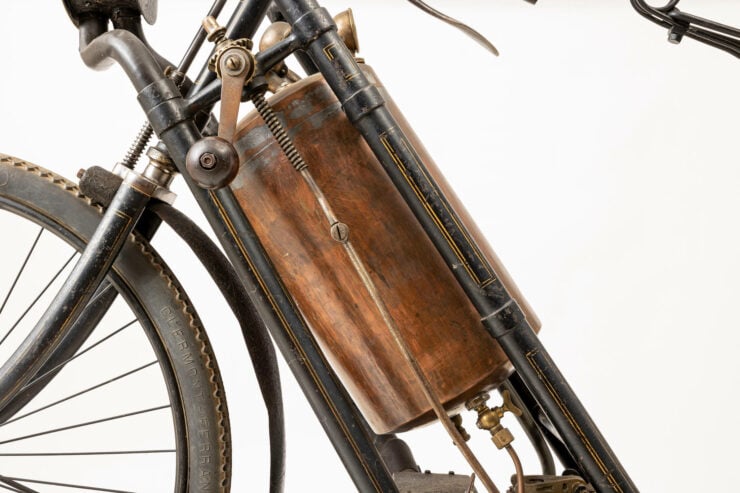
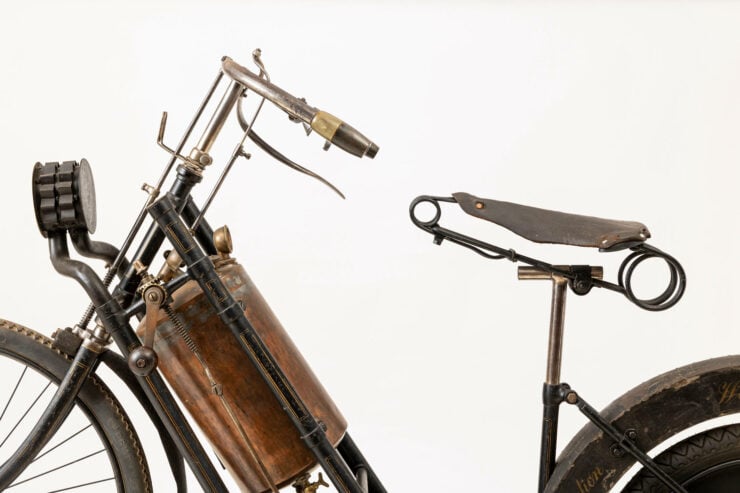
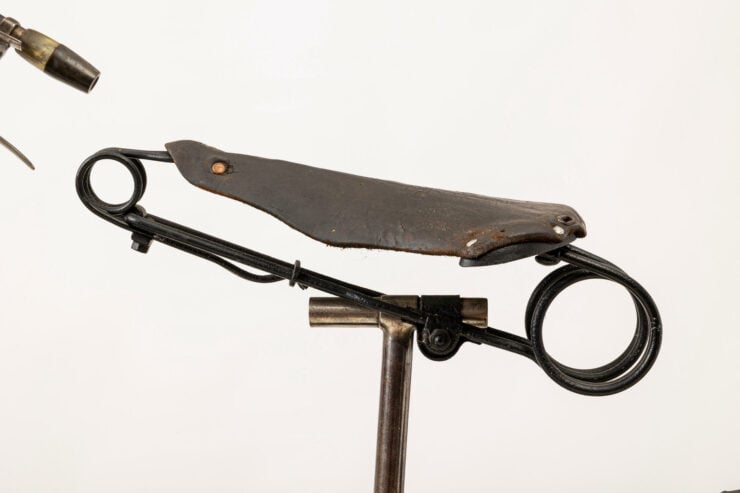
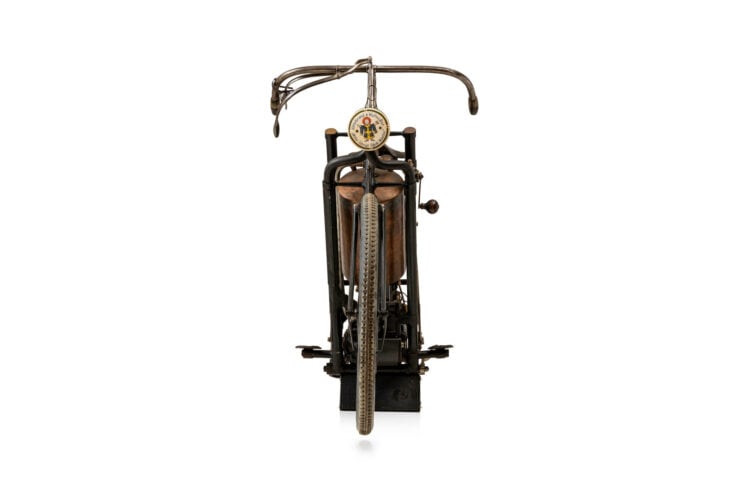
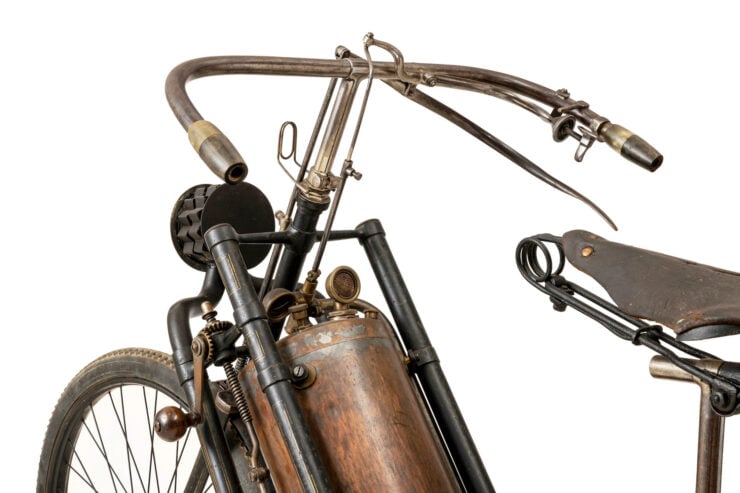
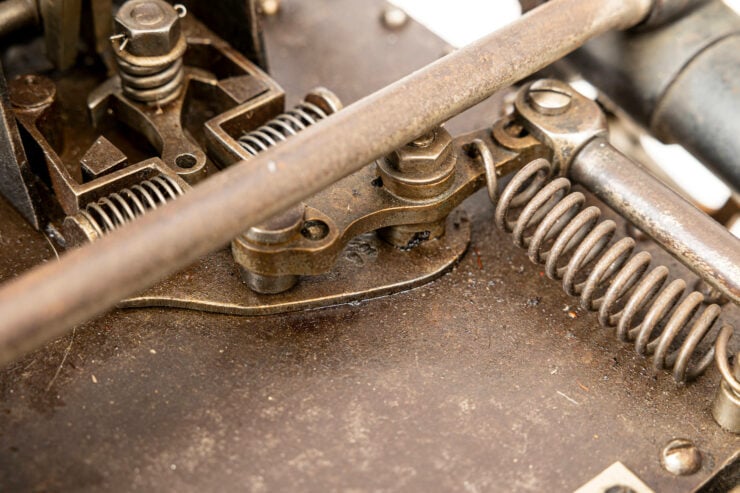
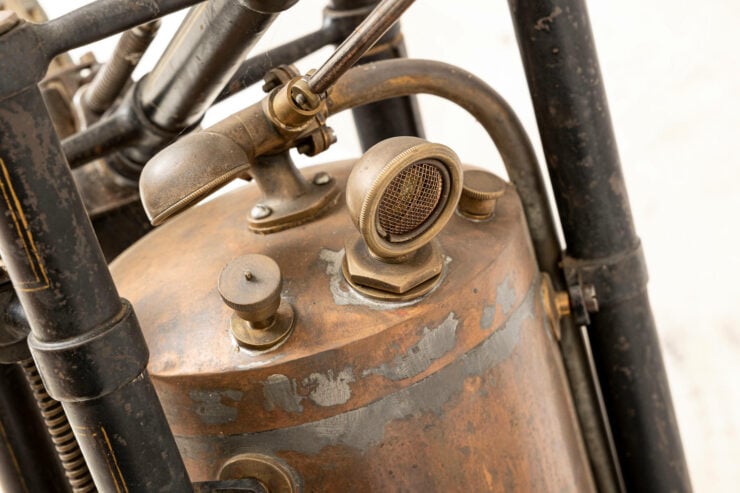
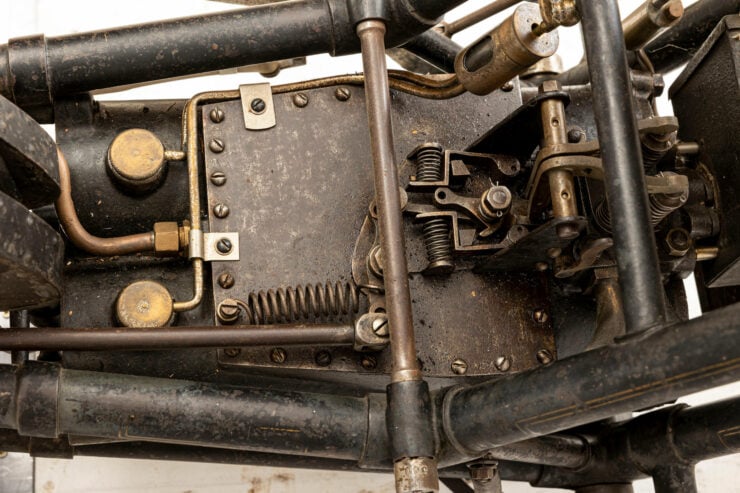
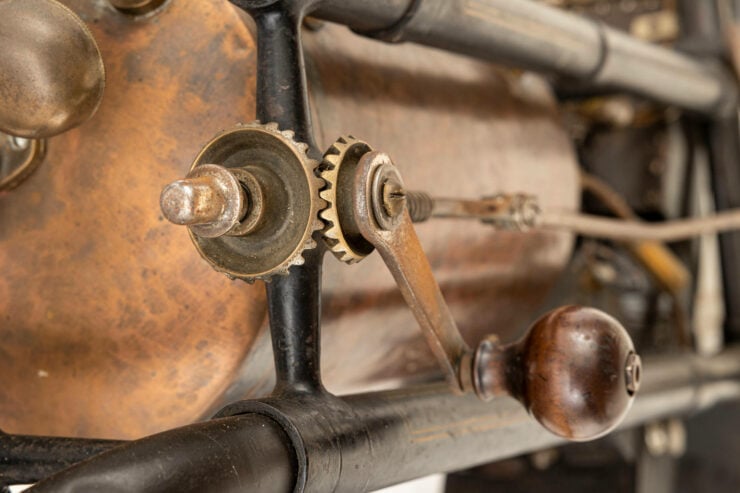
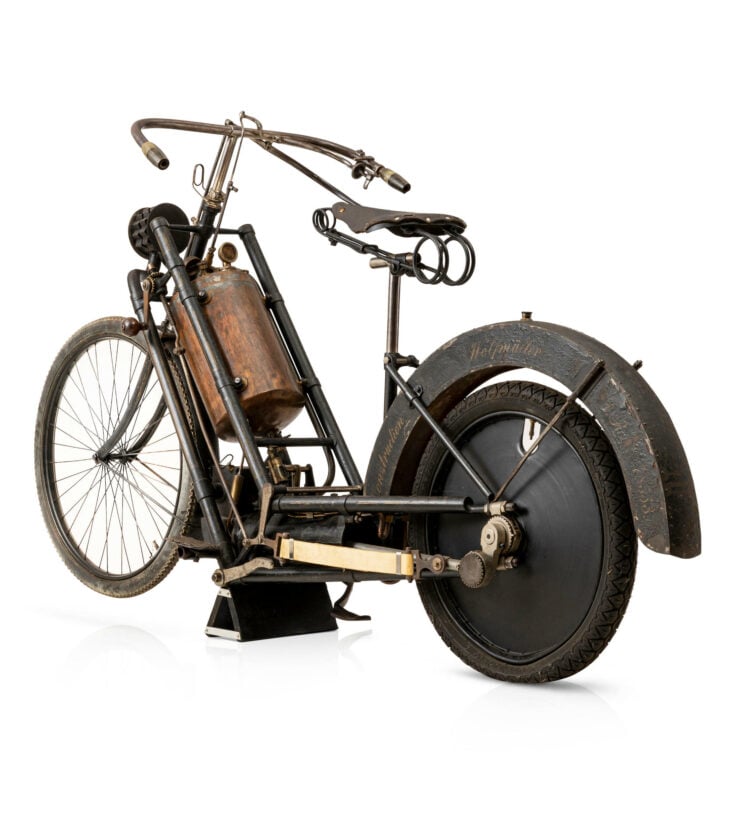
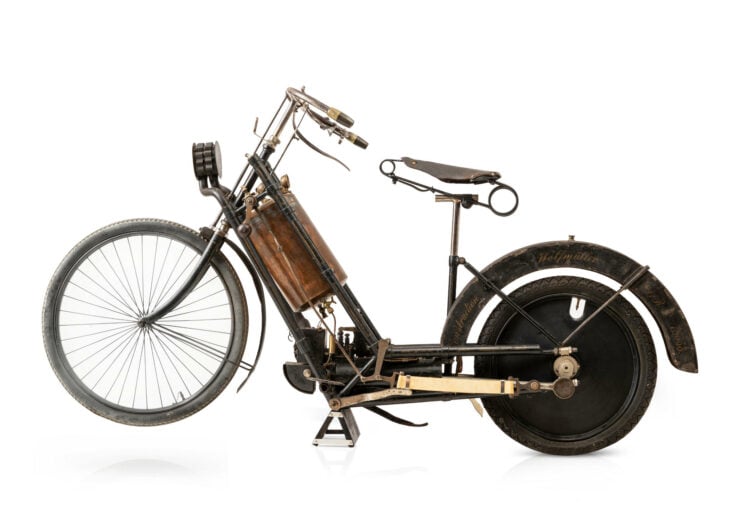
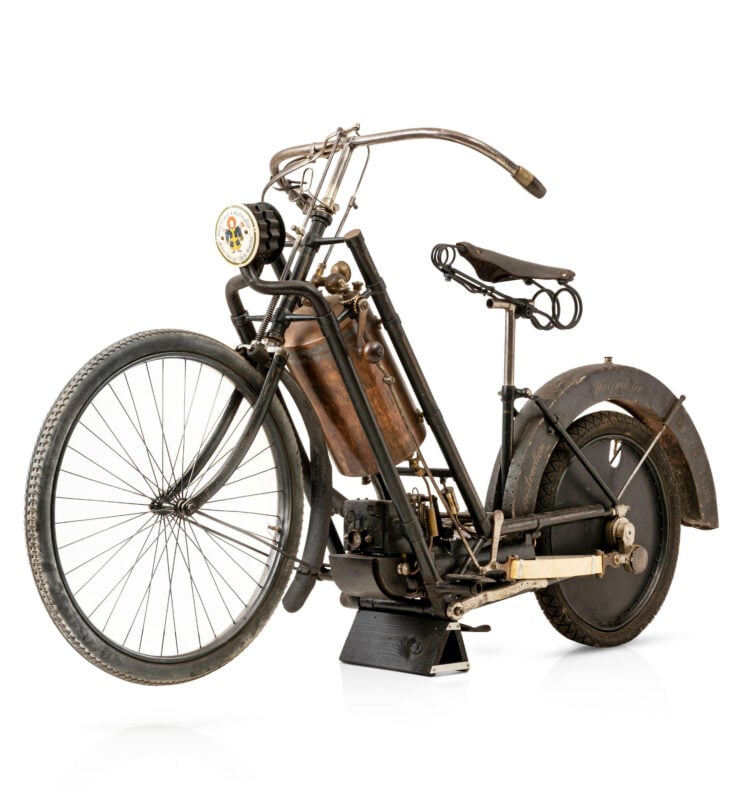
Images courtesy of Bonhams

